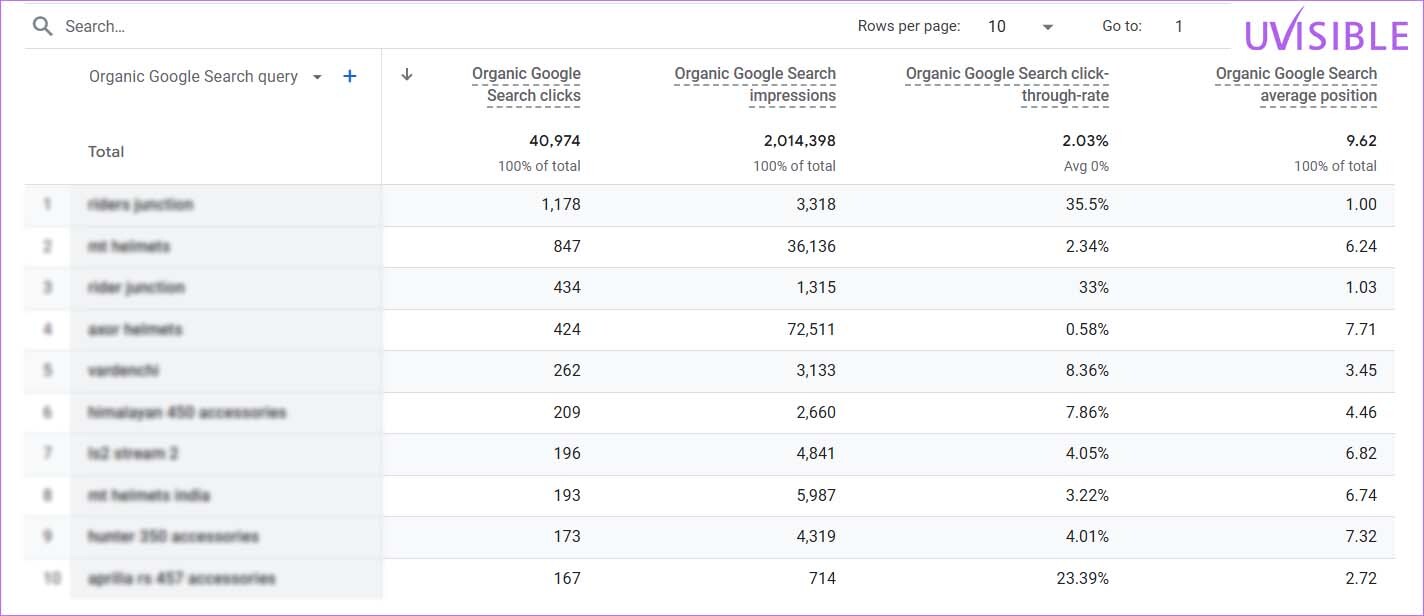Understanding MTD, YTD, QTD, MoM, and YoY Metrics: A Comprehensive Guide
- December 12, 2024
- SEO Audit
Digital marketing gets wasted if decision-making isn’t based on data. Every digital marketing strategy should rely on performance metrics to assess growth, forecast future trends, and identify opportunities.
Reporting should be data-based and the most common data-driven Google metrics are MTD (Month-to-Date), YTD (Year-to-Date), MoM (Month-over-Month), and YoY (Year-over-Year).
PPC reports, SEO reports, and white-label PPC and SEO reports use all these metrics. There is no fixed thumb rule that these metrics will work for this report.
It is important to understand each of them first and then identify which is most suitable for your reporting strategy. This blog will discuss them to help you understand them clearly.
Learn what MTD, YTD, QTD, MoM, and YoY metrics are.
What is MTD?

MTD stands for Month-to-Date performance metrics that begin from the start of the month to the most recent date.
It is best to get insights into the current month’s progress, making it best for short-term monitoring and analysis for quick improvements.
Suppose, today is 9th December, and you are checking your current revenue is $700 meaning your Month-to-Date would also be $700 from 1st December to 10th December. This figure represents the MTD click-through rate.
Suppose, your monthly revenue goal is to achieve $3000, this report will tell you that you are behind your daily target and you need to revise your per-day goal to achieve the monthly target.
If a business tracks its performance through MTD, it helps identify early trends, assess the current performance of ongoing campaigns, and help achieve monthly goals.
If you use MTD metrics reporting, it will help you get immediate insights for tactical decisions, such as reallocating resources or changing marketing efforts mid-month.
What is QTD?

QTD known as Quarter-to-date is another reporting metric. QTD means reporting and analyzing data once a quarter from the quarter’s beginning date.
This means there are 4 quarters in a year, 3 months of each. Suppose you are analyzing the revenue data from the 2nd quarter then you might start from 1st April (if the financial year begins from 1st January) till the current date ( 15th June) and it is $4200 within the quarter.
Suppose, your quarterly revenue goal is to achieve $9000, this report will tell you that you are behind your quarterly target and you need to revise your per-month goal to achieve the quarterly target.
If a business tracks its performance through MTD, it helps identify early digital marketing trends or other trends, assess the current performance of ongoing campaigns, and help achieve monthly goals.
QTD is a beneficial metric as you can compare the current quarter’s performance with the previous one to see if you are moving in the right direction or not. Based on the trends, you can adjust your strategy to achieve long-term goals.
What is YTD?

YTD’s abbreviation is Year-to-Date metrics. It indicates data from the beginning of the year till the current date. It is one of the most effective performance indicators for checking cumulative performance.
It gives an insight into the campaign on an interim basis to improve the strategy even before the year ends. It can also be compared with historical data from a similar period to see if the current campaign is working better or not!
For example, if you are reporting your revenue on 31st October from January 1 which is $8,000, this would be your YTD revenue.
Suppose, your yearly revenue goal is to achieve $12,000, this report will tell you that you are behind your yearly target and you need to revise your monthly goal to achieve the yearly target.
If a business tracks its performance through MTD, it helps identify early trends, assess the current performance of ongoing campaigns, and help achieve monthly goals.
Using these metrics, a business can strategize and monitor year-long trends, and progress as well as chances of achieving yearly targets.
What is MoM?

MoM known as Month-over-Month metrics is a comparison of one month to the next. It is the best reporting indicator if a business wants to check the immediate impact of decisions or market trends.
For example, if CTR was 30% in June and 35% in July, the MoM growth is 16.7%.
A digital marketing agency can use MoM metrics to evaluate the effectiveness of new initiatives such as product launches and promotional campaigns and to change as soon as trend shifts.
What is YoY?

YoY acronym stands for Year-over-Year, which compares data from the same period for consecutive years. This helps measure long-term growth, recurring factors, and accounting for seasonality.
For example, a digital marketing strategy led to a CTR of Q3 2024 of 50% up from 45% in Q3 2023. The YoY growth rate is 11.1%.
YoY reporting is best for assessing sustained growth, removing distortions caused by seasonal fluctuations, and benchmarking performance against previous years.
Importance of Using These Metrics

Each of the reporting metrics serves a different purpose, offering distinct insights to combine and create a new performance review:
MTD
It tracks month-to-date data to ensure monthly goals are on target. It helps identify early trends or issues.
QTD
It tracks Quarter-to-date data, best to compare the current quarter’s performance with previous ones to see if the campaign is moving in the right direction or not.
YTD
It offers a year-long analysis of the campaign, enabling businesses to identify challenges and trends or opportunities.
MoM
Offer short-term impact of changes, operational effectiveness, and latest trends.
YoY
It helps remove seasonal distortions and provides a clear image of sustained growth patterns and long-term trends.
Using These Metrics for SEO

Even though the above metrics are for PPC campaigns, however, information gained through these reports can be used to assess SEO campaigns as well.
These reports drive the performance of SEO campaigns to track campaign goals, conversions, intended actions taken by the audience, and other important metrics.
Measured on different scales, a company gets overall detailed reports on campaign performance for quick review and further implementation.
However, creating a white-label SEO report can be a tiring task as there is no fixed reporting format for the same. Every company follows different patterns according to their goals and strategies.
You can use Google Analytics or Search Console to pull data for creating a detailed report. For example, if you want to check yearly conversions, go to Google Analytics to bring to-date data from the start of the year. This information will help you invest more wisely.
Google Search Console is another best option for reporting as it provides data-driven insights. Suppose, you are keyword researching, Search Console provides you best results to check the rankings of keywords and their volume.

By this, you can find the best-performing keywords and which keywords need to be optimized on the site.
There are every performance metrics that can be analyzed by Search Console and Google Analytics and reporting can be done.
Even if you are outsourcing SEO services, you can ask for a detailed white-label SEO performance report for a clear understanding of the campaign’s performance and the actionable improvements required.
Tools for Tracking Metrics
![]()
Some tools simplify metric tracking and data visualization, making data-driven decisions more accessible:
Excel and Google Sheets:
Best for manual calculations and custom reporting templates and is largely used by organizations to provide campaign insights.
Business Intelligence Tools:
Tools like Looker Studio, Microsoft Power BI, Tableau, SEMrush, DashThis, and AgencyAnalytics offer real-time PPC and SEO data tracking, integration, and visualization.
Final Words
MTD, QTD, YTD, MoM, and YoY metrics are key tools to assess PPC or SEO campaign performance. A business can track progress, conversions, trends, and results using these metrics for informed decision-making.
Whether you are analyzing CTR or keyword researching, these tools will provide you with an in-depth roadmap for success. Let these reports guide you to make informed decisions for the future to achieve all your digital marketing goals.
About us and this blog
We are a digital marketing company with a focus on helping our customers achieve great results across several key areas.
Request a free quote
We offer professional SEO services that help websites increase their organic search score drastically in order to compete for the highest rankings even when it comes to highly competitive keywords.
Subscribe to our newsletter!
More from our blog
See all postsRecent Posts
- How to Create Effective Location Landing Pages for Local SEO March 12, 2025
- AI is Taking Over SEO – Adapt Now or Disappear from Search! March 7, 2025
- Maximize Your Reach with Google Discovery Ads March 1, 2025








